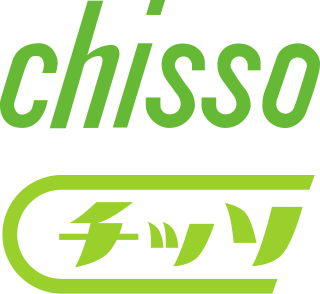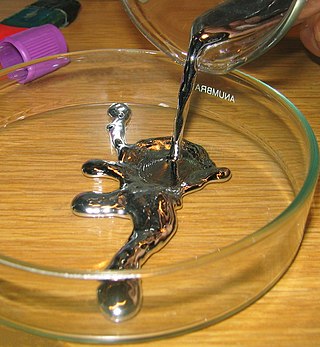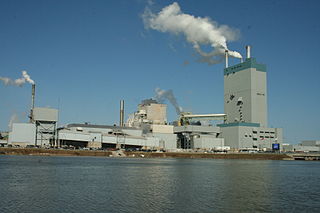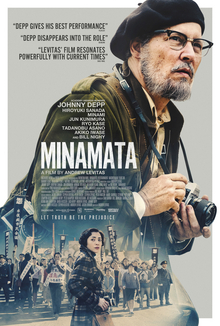Related Research Articles

Minamata disease is a neurological disease caused by severe mercury poisoning. Signs and symptoms include ataxia, numbness in the hands and feet, general muscle weakness, loss of peripheral vision, and damage to hearing and speech. In extreme cases, insanity, paralysis, coma, and death follow within weeks of the onset of symptoms. A congenital form of the disease affects fetuses in the womb, causing microcephaly, extensive cerebral damage, and symptoms similar to those seen in cerebral palsy.

Minamata is a city located in Kumamoto Prefecture, Japan. It is on the west coast of Kyūshū and faces Amakusa islands. Minamata was established as a village in 1889, re-designated as a town in 1912 and grew into a city in 1949. As of March 2017, the city has an estimated population of 25,310 and a population density of 160 persons per km². The total area is 162.88 km².

Mercury poisoning is a type of metal poisoning due to exposure to mercury. Symptoms depend upon the type, dose, method, and duration of exposure. They may include muscle weakness, poor coordination, numbness in the hands and feet, skin rashes, anxiety, memory problems, trouble speaking, trouble hearing, or trouble seeing. High-level exposure to methylmercury is known as Minamata disease. Methylmercury exposure in children may result in acrodynia in which the skin becomes pink and peels. Long-term complications may include kidney problems and decreased intelligence. The effects of long-term low-dose exposure to methylmercury are unclear.

Dimethylmercury is an extremely toxic organomercury compound with the formula (CH3)2Hg. A volatile, flammable, dense and colorless liquid, dimethylmercury is one of the strongest known neurotoxins. Less than 0.1 mL is capable of inducing severe mercury poisoning resulting in death.

The Wabigoon River is a river in Kenora District in northwestern Ontario, Canada. It flows from Raleigh Lake past Dryden, Ontario on Wabigoon Lake to join the English River. The name "Wabigoon" comes from the Ojibwe waabigon, "marigold", or waabi-miigwan, "white feather".

Methylmercury (sometimes methyl mercury) is an organometallic cation with the formula [CH3Hg]+. It is the simplest organomercury compound. Methylmercury is extremely toxic, and its derivatives are the major source of organic mercury for humans. It is a bioaccumulative environmental toxicant with a 50-day half-life.

The Chisso Corporation, since 2012 reorganized as JNC, is a Japanese chemical company. It is an important supplier of liquid crystal used for LCDs, but is best known for its role in the 34-year-long pollution of the water supply in Minamata, Japan that led to thousands of deaths and victims of disease.
The four big pollution diseases of Japan were a group of man-made diseases all caused by environmental pollution due to improper handling of industrial wastes by Japanese corporations. The first occurred in 1912, and the other three occurred in the 1950s and 1960s.

Minamata Bay is a bay in the small factory town of Minamata on the west coast of Kyūshū island, located in Kumamoto Prefecture, Japan. The bay is part of the larger Shiranui Sea which is sandwiched between the coast of the Kyūshū mainland and the off-lying islands of Kumamoto and Nagasaki prefectures.
Niigata Minamata disease is a neurological syndrome caused by severe mercury poisoning. Identical in symptoms to the original outbreak of Minamata disease in Kumamoto Prefecture, the second outbreak in Niigata Prefecture was confirmed with the same name in 1965. The disease was caused by severe mercury poisoning, the source of which was methylmercury released in the wastewater from mercury sulfate-catalysed acetaldehyde production at the Showa Electrical Company's chemical plant in Kanose village. This highly toxic compound was released untreated into the Agano River where it bioaccumulated up the food chain, contaminating fish which when eaten by local people caused symptoms including ataxia, numbness in the hands and feet, general muscle weakness, narrowing of the field of vision and damage to hearing and speech.
Ontario Minamata disease is a neurological syndrome caused by severe mercury poisoning. It occurred in the Canadian province of Ontario, in 1970, and severely affected two First Nation communities in Northwestern Ontario following consumption of local fish contaminated with mercury, and one First Nation in Southern Ontario due to illegal disposal of industrial chemical waste. The disease was named after the infamous case of severe mercury poisoning in the fishing community of Minamata, Japan, which became known as Minamata disease because it devastated only the residents of the community.

The 1971 Iraq poison grain disaster was a mass methylmercury poisoning incident that began in late 1971. Grain treated with a methylmercury fungicide and never intended for human consumption was imported into Iraq as seed grain from Mexico and the United States. Due to a number of factors, including foreign-language labelling and late distribution within the growing cycle, this toxic grain was consumed as food by Iraqi residents in rural areas. People suffered from paresthesia, ataxia and vision loss, symptoms similar to those seen when Minamata disease affected Japan. The recorded death toll was 459 people, but figures at least ten times greater have been suggested. The 1971 poisoning was the largest mercury poisoning disaster when it occurred, with cases peaking in January and February 1972 and stopping by the end of March.

Metal toxicity or metal poisoning is the toxic effect of certain metals in certain forms and doses on life. Some metals are toxic when they form poisonous soluble compounds. Certain metals have no biological role, i.e. are not essential minerals, or are toxic when in a certain form. In the case of lead, any measurable amount may have negative health effects. It is often thought that only heavy metals can be toxic, but lighter metals such as beryllium and lithium may also be in certain circumstances. Not all heavy metals are particularly toxic, and some are essential, such as iron. The definition may also include trace elements when abnormally high doses may be toxic. An option for treatment of metal poisoning may be chelation therapy, a technique involving the administration of chelation agents to remove metals from the body.
Got Mercury? is a public awareness campaign about mercury levels in seafood. It is sponsored by the Sea Turtle Restoration Project (STRP) and its parent organization, the Turtle Island Restoration Network (TIRN). The name of the campaign is based on the successful Got Milk? advertising campaign.

Mercury is a chemical element; it has symbol Hg and atomic number 80. It is also known as quicksilver and was formerly named hydrargyrum from the Greek words hydor (water) and argyros (silver). A heavy, silvery d-block element, mercury is the only metallic element that is known to be liquid at standard temperature and pressure; the only other element that is liquid under these conditions is the halogen bromine, though metals such as caesium, gallium, and rubidium melt just above room temperature.

The presence of mercury in fish is a health concern for people who eat them, especially for women who are or may become pregnant, nursing mothers, and young children. Fish and shellfish concentrate mercury in their bodies, often in the form of methylmercury, a highly toxic organomercury compound. This element is known to bioaccumulate in humans, so bioaccumulation in seafood carries over into human populations, where it can result in mercury poisoning. Mercury is dangerous to both natural ecosystems and humans because it is a metal known to be highly toxic, especially due to its neurotoxic ability to damage the central nervous system.

The Dryden pulp mill, also known as the Reed Mill, is a paper and pulp mill in Dryden, Ontario. During the 1960s and 70s, mercury poisoning from the mill caused one of Canada's worst environmental disasters: Dryden Chemicals Ltd dumped mercury into the English-Wabigoon River, upstream of Grassy Narrows First Nation, poisoning the fish which were their staple food. Members of the Grassy Narrows and the Whitedog communities downstream from the mill suffered severe mercury poisoning.
The Shiranui Sea is a Japanese documentary made in 1975 by Noriaki Tsuchimoto. It is the fourth in a series of independent documentaries that Tsuchimoto made of the mercury poisoning incident in Minamata, Japan.

Minamata is a 2020 biographical drama film directed by Andrew Levitas, based on the book of the same name by Aileen Mioko Smith and W. Eugene Smith. The film stars Johnny Depp as W. Eugene Smith, an American photographer who documented the effects of mercury poisoning on the citizens of Minamata, Kumamoto, Japan. The film premiered at the Berlin International Film Festival on February 21, 2020. It was released in the United States on February 11, 2022, by Samuel Goldwyn Films. At the 94th Academy Awards in 2022, the film ranked third place in the Oscars Fan Favorite contest.

Mercury contamination in Grassy Narrows was an uncontrolled discharge of between 9,000 kilograms (20,000 lb) and 11,000 kilograms (24,000 lb) of mercury from the Dryden Mill's chloralkali plant in Dryden into the headwaters of the Wabigoon River in the Kenora District of Northwestern Ontario from 1962 until 1970. It was described as "one of the worst cases of environmental poisoning in Canadian history." The contamination poisoned many people in the Grassy Narrows First Nation and Whitedog First Nation communities
References
- ↑ Jane Hightower (2008). Diagnosis Mercury: Money, Politics and Poison. Island Press. p. 250. ISBN 978-1-59726-450-1. OCLC 318428214.
- ↑ Review: Diagnosis: Mercury by Jane Hightower
- ↑ Diagnosis Mercury: Money, Politics and Poison by Jane M. Hightower